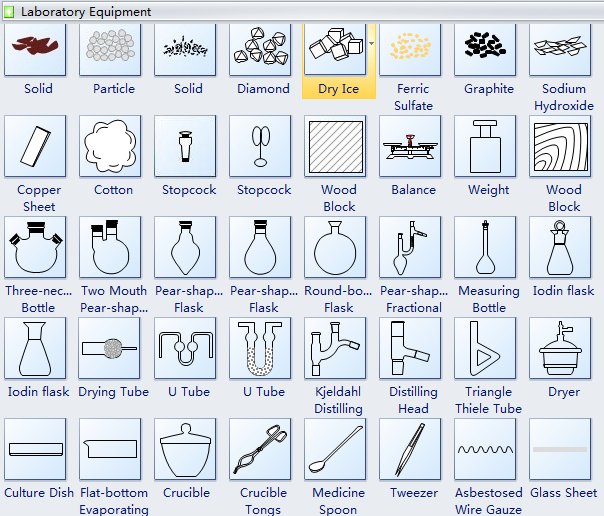Laboratory Safety Tips
Hazards of the Chemicals You May Use
Beware of the potential hazards of the chemicals you may use. Since every chemical has its own set of properties, it might seem impossible to anticipate all of the potential hazards. So you must read the label or instructions before using. For example, some chemicals require special disposal procedures, and cannot be dumped down the drain.
Generally, chemical hazards can be grouped into four different areas:
1. Flammability - for chemicals that readily burn
2. Corrosivity - for chemicals that destroy tissue by chemical action.
3. Toxicity - for chemicals that are poisonous.
4. Reactivity - for chemicals that undergo spontaneous chemical reactions, or readily react with other chemicals.
Useful Tips on Laboratory Safety
- Learn to use the personal protective equipment properly e.g., fume hoods.
- Avoid overexposure to hazardous chemicals, and immediately report any actual or probable overexposure to your teacher. If you experience immediate or delayed symptoms of chemical exposures, seek medical evaluation.
- Report all spills, accidents and injuries to your teacher or the lab manager immediately. At the end of experiment, dispose hazardous waste according to proper procedures.
- Students should never work alone in the laboratory. No student may work in the science classroom without the presence of the teacher.
- When first entering a science room, do not touch any equipment, chemicals, or other materials in the laboratory area until you are instructed to do so.
- Do not eat food, drink beverages, or chew gum in the laboratory. Do not use laboratory glassware as containers for food or beverages.
- Keep hands away from face, eyes, mouth, and skin while using chemicals or lab equipment. Wash your hands with soap and water after finishing experiments.
- Never handle broken glass with your bare hands since it may cut your hands. Use a brush and dustpan to clean up broken glass. Place broken glass in the designated glass disposal container.
- Know the locations and operating procedures of all safety equipment including: first aid kit(s), and fire extinguisher. Know where the fire alarm and the exits are located.
Note that these are only some of the dos and don'ts about laboratory safety. The best advice is to always follow your teacher's instructions.
If you are a teacher, make some worksheet to draw students' attention to safety with some visual diagrams like the following one.
The above diagram is created by Edraw with its high quality laboratory shapes. Refer to the following sections to learn details about laboratory equipment software and shapes.
Laboratory Equipment Shapes
Edraw's laboratory equipment shapes are ready-to-use in popular vector format. It can benefit a large group of people including students, teachers, staff from chemical industry and researchers. Check out the shapes in the picture below. Refer to Chemical Laboratory Equipment Shapes for more details.

Free Download Software and View All Vector Symbols
Easy-to-use Laboratory Equipment Software
Edraw is a comprehensive drawing package that allows you to draw chemical structures in minutes with an improved and user-friendly interface based on the feedback from years of experience. More information about this software can be found in Chemistry Laboratory Equipment Drawing Software. Have a look at the diagram made by this software.

Links
Laboratory Equipment Diagram Software
Chemistry Laboratory Instruments
Chemistry Laboratory Glassware
Mathematics Symbols for Easier Math


